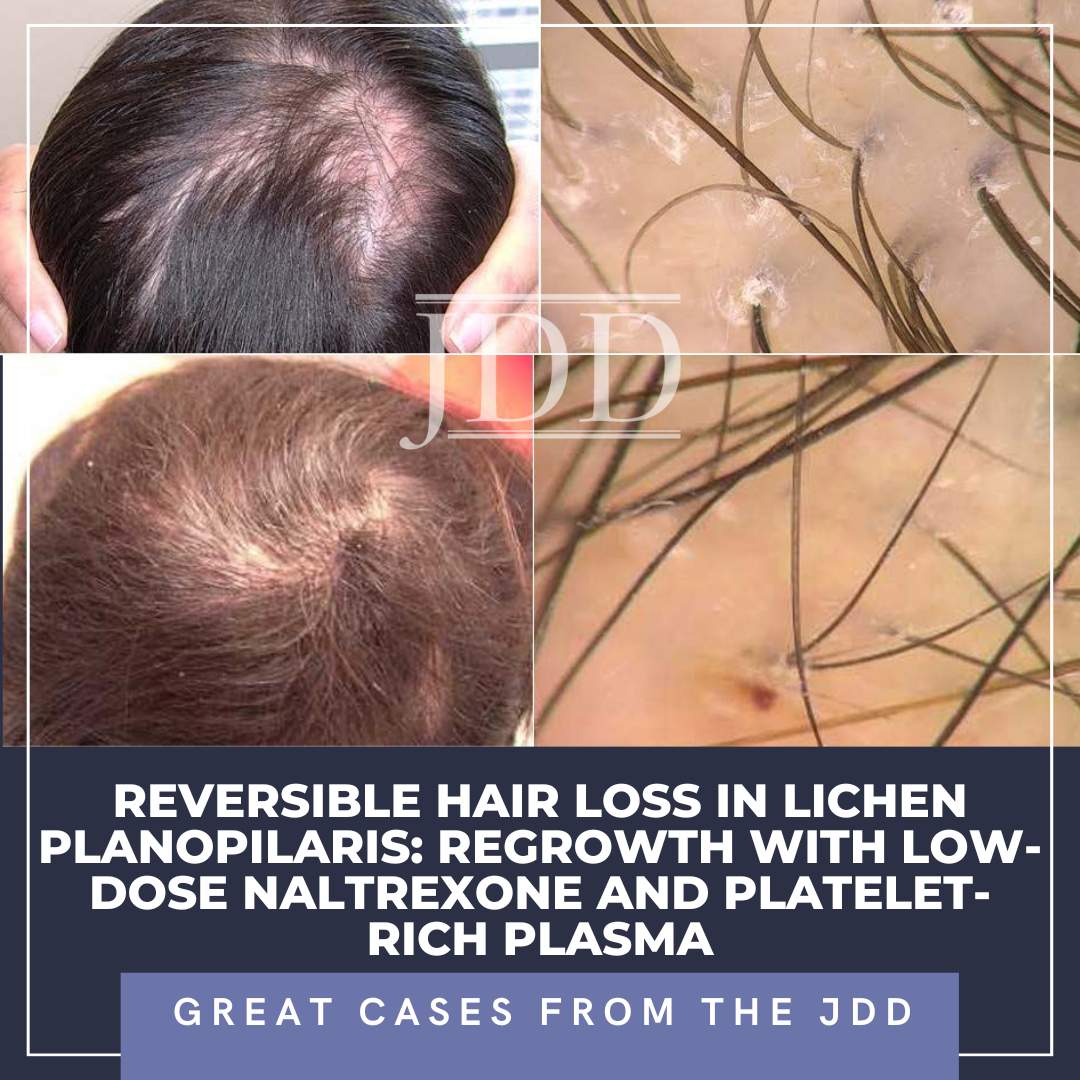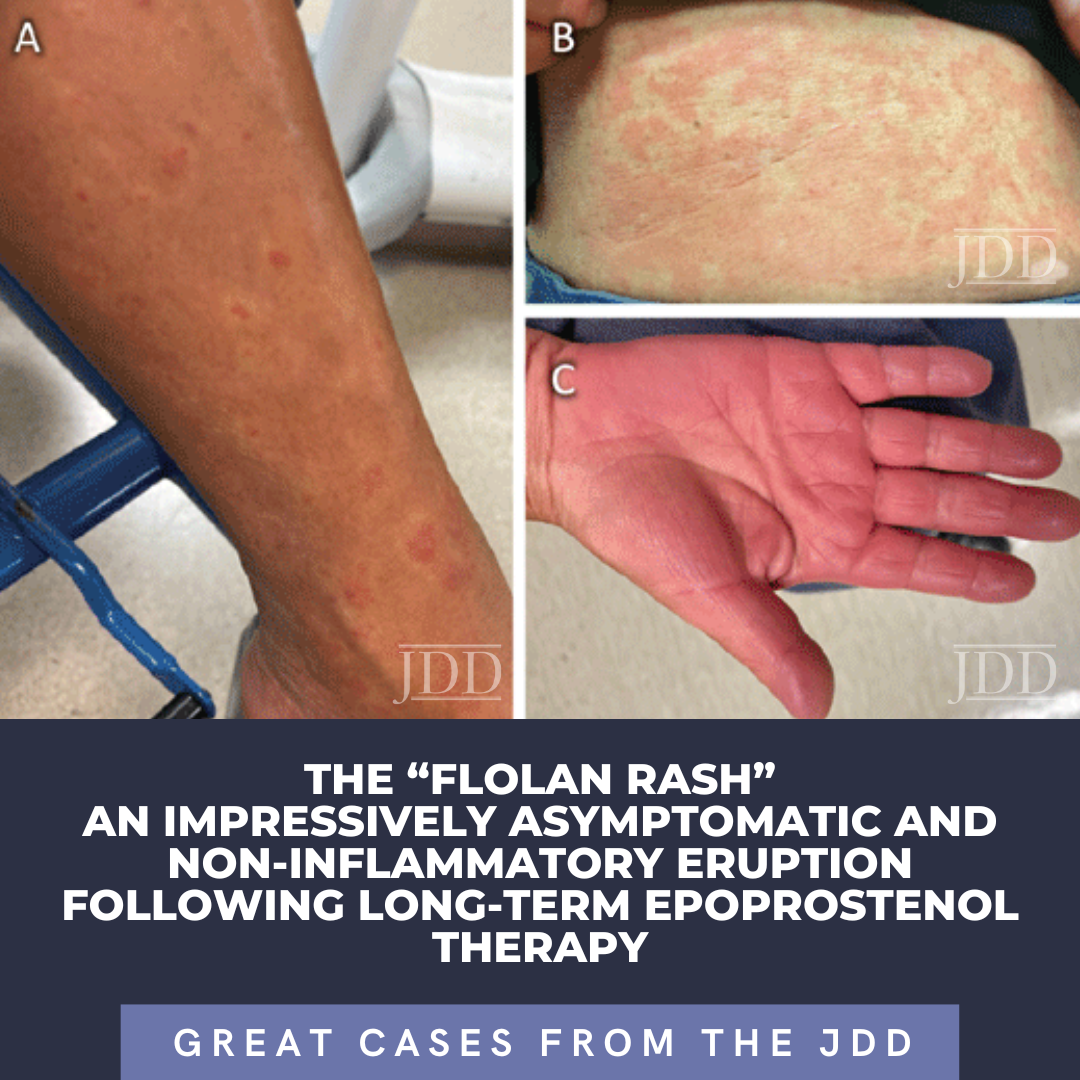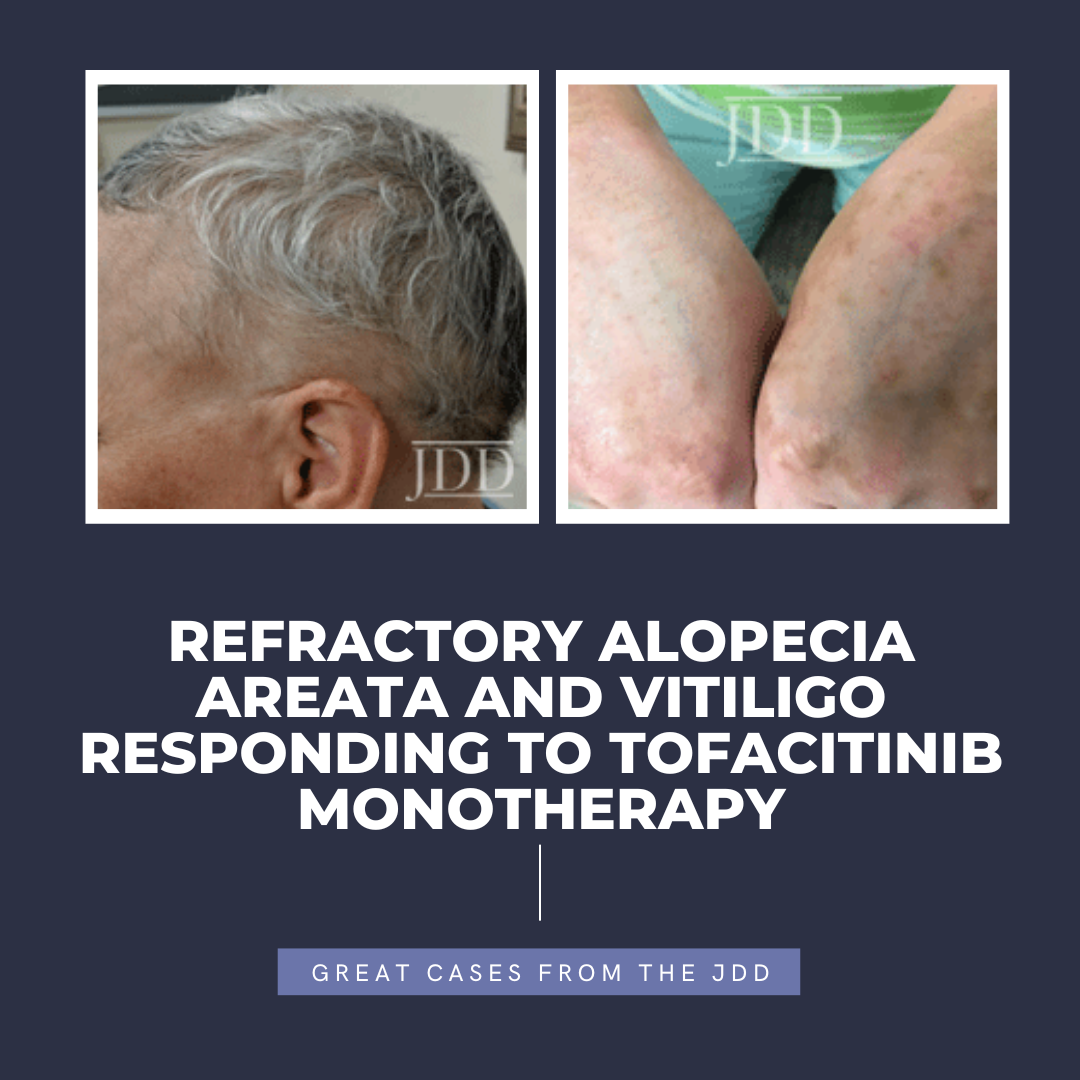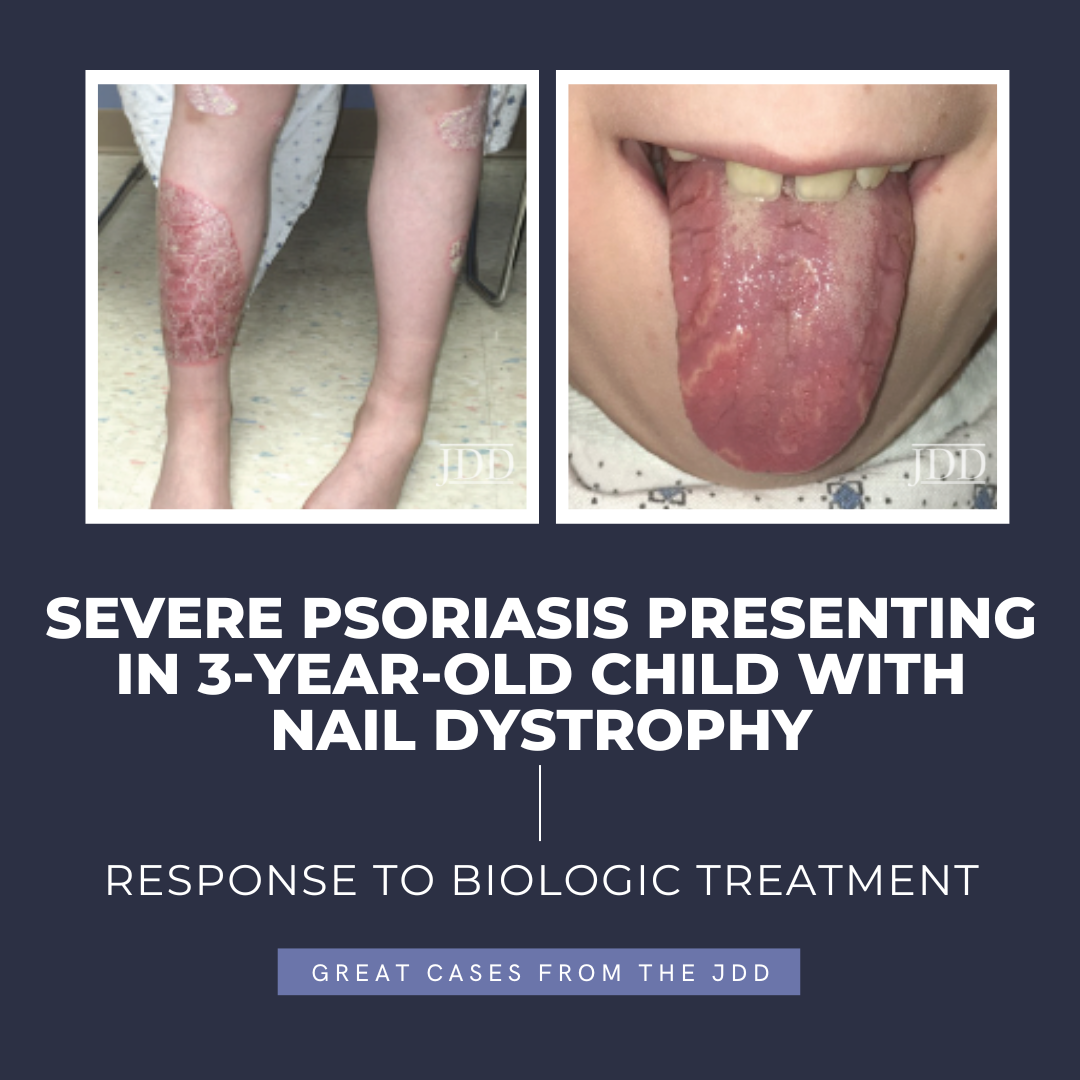Reversible Hair Loss in Lichen Planopilaris | Great Cases from the JDD
 INTRODUCTION
Lichen planopilaris (LPP) is a cicatricial alopecia that presents with patchy or diffuse hair loss at the vertex or parietal scalp. Although there is no gold standard therapy, most interventions are immune modulating and aimed at reducing inflammation and terminating the scarring process to prevent further fibrosis.3 Even amongst patients who respond to therapy, hair loss at alopeci …
INTRODUCTION
Lichen planopilaris (LPP) is a cicatricial alopecia that presents with patchy or diffuse hair loss at the vertex or parietal scalp. Although there is no gold standard therapy, most interventions are immune modulating and aimed at reducing inflammation and terminating the scarring process to prevent further fibrosis.3 Even amongst patients who respond to therapy, hair loss at alopeci …
 INTRODUCTION
Lichen planopilaris (LPP) is a cicatricial alopecia that presents with patchy or diffuse hair loss at the vertex or parietal scalp. Although there is no gold standard therapy, most interventions are immune modulating and aimed at reducing inflammation and terminating the scarring process to prevent further fibrosis.3 Even amongst patients who respond to therapy, hair loss at alopeci …
INTRODUCTION
Lichen planopilaris (LPP) is a cicatricial alopecia that presents with patchy or diffuse hair loss at the vertex or parietal scalp. Although there is no gold standard therapy, most interventions are immune modulating and aimed at reducing inflammation and terminating the scarring process to prevent further fibrosis.3 Even amongst patients who respond to therapy, hair loss at alopeci … Continue reading "Reversible Hair Loss in Lichen Planopilaris | Great Cases from the JDD"


 The February issue of the Journal of Drugs in Dermatology (JDD) includes the perfect blend of original articles, case reports, and brief communications exploring topics such as efficacy and safety of 1% clascoterone cream in patients aged ≥12 years with acne vulgaris, dupilumab’s impact on atopic dermatitis among adolescent and adult patients, development and validation of a photonumeric scale …
The February issue of the Journal of Drugs in Dermatology (JDD) includes the perfect blend of original articles, case reports, and brief communications exploring topics such as efficacy and safety of 1% clascoterone cream in patients aged ≥12 years with acne vulgaris, dupilumab’s impact on atopic dermatitis among adolescent and adult patients, development and validation of a photonumeric scale …  INTRODUCTION
Epoprostenol (Flolan) is a last-resort intravenous (IV) medication for the treatment of severe pulmonary arterial hypertension (PAH). Cutaneous adverse events of Flolan are well-known by pulmonologists, though lacking in dermatologic literature.1 We report an extensive near erythrodermic appearing asymptomatic eruption following long-term use of epoprostenol. This characteristic and …
INTRODUCTION
Epoprostenol (Flolan) is a last-resort intravenous (IV) medication for the treatment of severe pulmonary arterial hypertension (PAH). Cutaneous adverse events of Flolan are well-known by pulmonologists, though lacking in dermatologic literature.1 We report an extensive near erythrodermic appearing asymptomatic eruption following long-term use of epoprostenol. This characteristic and …  INTRODUCTION
Tofacitinib is a Janus kinase (JAK) 1-3 inhibitor first U.S. Food and Drug Administration (FDA) approved in 2012 for rheumatoid arthritis, with subsequent approval for psoriatic arthritis, ulcerative colitis, polyarticular course juvenile idiopathic arthritis, and ankylosing spondylitis in 2017, 2018, 2020, and 2021, respectively.1,2 In the last several years, oral tofacitinib …
INTRODUCTION
Tofacitinib is a Janus kinase (JAK) 1-3 inhibitor first U.S. Food and Drug Administration (FDA) approved in 2012 for rheumatoid arthritis, with subsequent approval for psoriatic arthritis, ulcerative colitis, polyarticular course juvenile idiopathic arthritis, and ankylosing spondylitis in 2017, 2018, 2020, and 2021, respectively.1,2 In the last several years, oral tofacitinib …  Psoriasis, a chronic inflammatory skin condition, affects about 2% of children. A small subset have isolated nail involvement refractory to topical treatment that can be disabling. The development of targeted biologic agents offers safe, effective options for children with moderate-to-severe skin and nail disease. A few are now Food and Drug Administration (FDA)-approved for children.
INTRODUCTIO …
Psoriasis, a chronic inflammatory skin condition, affects about 2% of children. A small subset have isolated nail involvement refractory to topical treatment that can be disabling. The development of targeted biologic agents offers safe, effective options for children with moderate-to-severe skin and nail disease. A few are now Food and Drug Administration (FDA)-approved for children.
INTRODUCTIO …